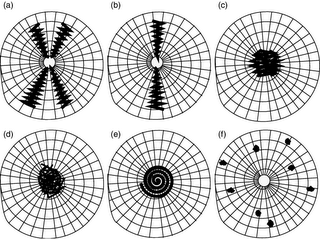 Building a web over the fan flowers has paid off big time for this Argiope. He's doubled his size in a week or so and shifted his web to intercept bigger and better prey.
Building a web over the fan flowers has paid off big time for this Argiope. He's doubled his size in a week or so and shifted his web to intercept bigger and better prey.This is one of the more sombre species of Argiope. Its web is equally restrained, decorated only with a vertical band of thickened silk that looks like clumsy darning. In contrast, the St Andrews cross spider (A. keyserlingii), with a body enamelled in bands of yellow, black and white, adorns its web with a big, bold X. Other orb weaver species add characteristic embellishments. Its not a matter of arachnid aesthetics, so what is the purpose of these fancy bits?
That's still a subject of debate. Matthew Bruce (2006) summarised the hypotheses
proposed to explain the decorations (called stabilimenta), which occur in a range of webs.
The stabilimenta may:
- deter predatory wasps (but unfortunately attract predatory spiders)
- provide a barrier to hide behind
- make the spider look bigger
- reflect UV light so they resemble flowers or the gaps between foliage and so lure in prey
- advertise the web so birds don't blunder into it
Bruce suggested that they might have different functions under different conditions. In some species, the patterns change when the juveniles become adults. Presumably the role changes too.
Whatever the reason, my eight-legged pal is doing okay with his web.

[Diagram from Bruce (2006). Webs produced by (a) Argiope versicolor; (b) 'Araneus' eburnus; (c) juvenile Argiope versicolor; (d) Zosis geniculata; (e) Octonoba sybiotides; and (f) Gasteracantha minax.]
Read more
Bruce, M.J. (2006). Journal of Zoology 269 (1): 89 – 97.